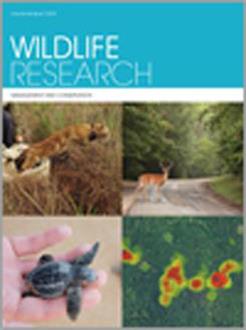Context. As top predators, marine mammals play a key role consuming in different trophic levels and the trophic niche characterization may help to understand how species utilize and share resources . On the coast of the Río de la Plata and the South-west Atlantic, the South American sea lion (Otaria flavescens) and the franciscana dolphin (Pontoporia blainvillei) are two important predators.
Aims. The present study investigated potential trophic overlap of both species by measuring stable carbon (δ13C) and nitrogen (δ15N) isotopes over two periods: historical (1959–79) and recent (2002–15) on the Uruguayan coast.
Methods. Bone samples of P. blainvillei and O. flavescens were used to determine the isotopic niche using the Stable Isotope Bayesian Ellipses in R (SIBER) analysis.
Key results. The isotopic niche did not overlap between species in any period. δ15N was higher in O. flavescens in both periods (20.29‰ ± 0.73 in the historical and 19.95‰ ± 1.0 in the recent period), indicating that it feeds at a higher trophic level than P. blainvillei. The δ13C was also significantly higher in O. flavescens than in P. blainvillei during the two periods (O. flavescens: –11.43 ± 0.6‰ historic, –12.72 ± 0.4‰ recent, and P. blainvillei: –12.69 ± 1.1‰ historic, –13.84 ± 1.3‰ recent). The isotopic niche areas of P. blainvillei in recent and historic periods confirmed they forage in 2 distinct environments, marine and estuarine, with low isotopic overlap. This overlap was higher in the recent period.
Conclusions and Implications.O. flavescens and both P. blainvillei groups were segregated in both periods, with a higher overlap in the recent. These species appear to reduce competition by using different resources in the same coastal habitat. O. flavescens preferentially feeds on benthic fish and showed wider trophic amplitude in both periods, whereas P. blainvillei has a more coastal–pelagic diet and included a greater variability of resources in its diet. The differences between species trophic niches can still be detected after both marine mammals species abundance has declined and after the development of fisheries.






